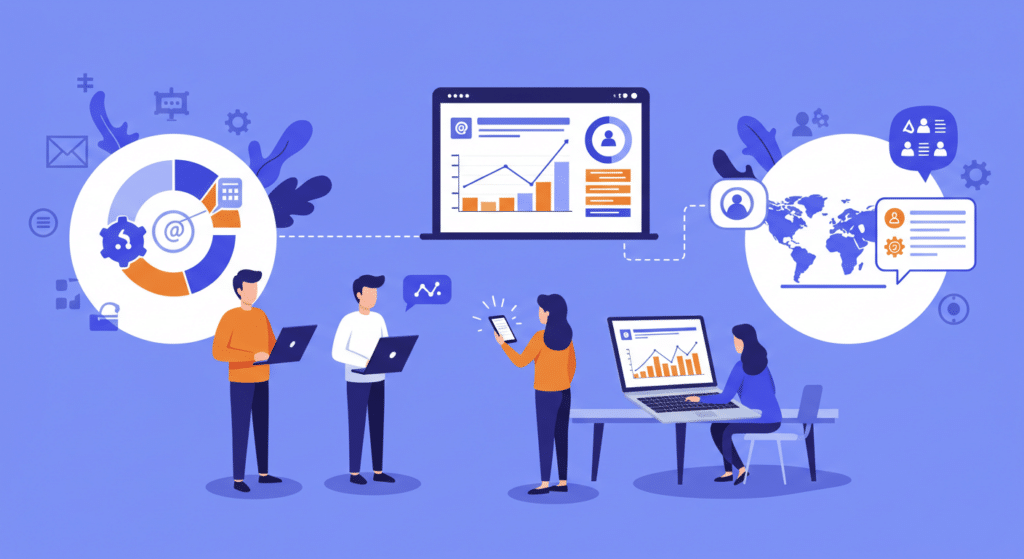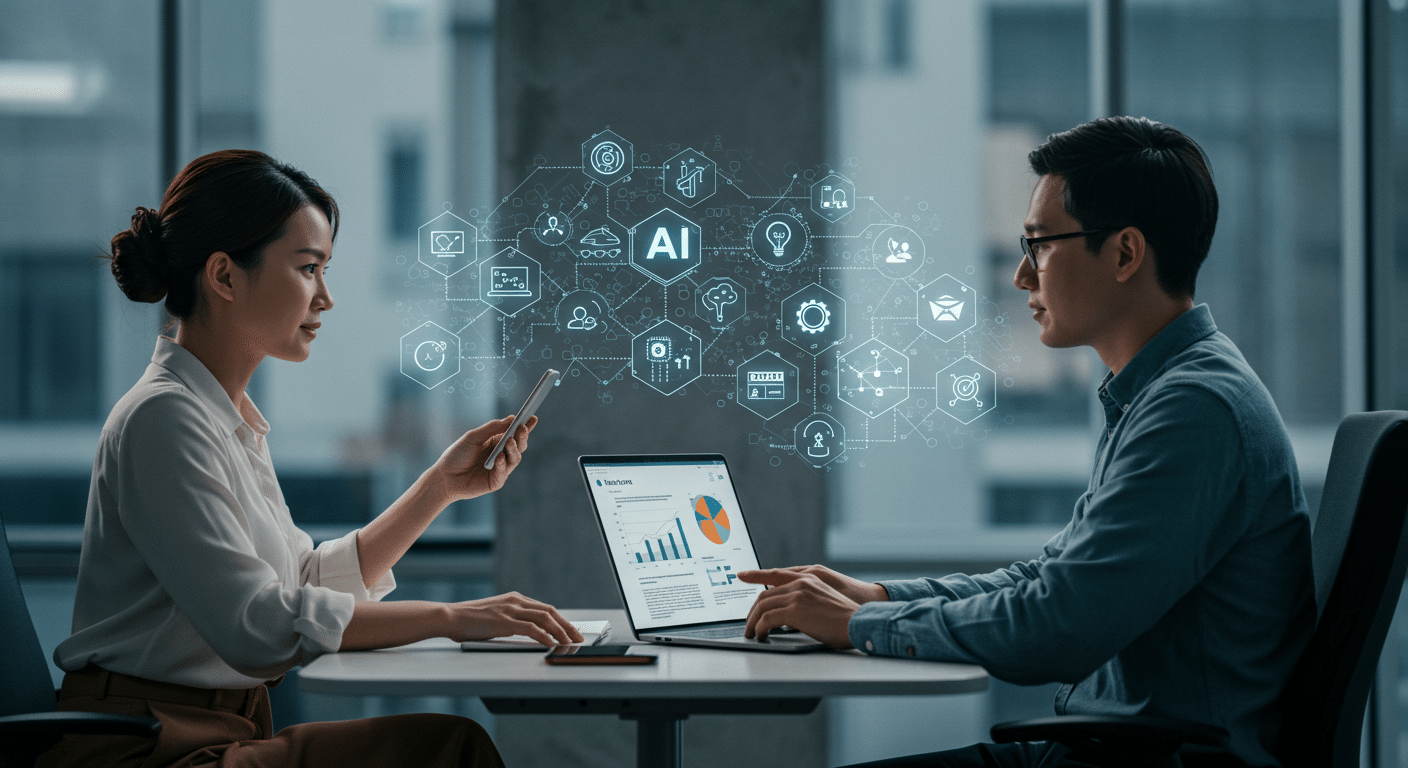Digital Employee Experience (DEX) is a term that refers to the overall experience that an employee has while interacting with and using digital tools and technologies in the workplace. It encompasses all aspects of the digital workplace, including technology, culture, training, and skills development.
In today’s fast-paced and technology-driven world, organizations are increasingly realizing the importance of providing a positive and seamless digital experience for their employees.
This article explores the significance of DEX, its impact on employee engagement, and strategies to optimize the digital workplace experience.
Understanding the Concept of Digital Employee Experience

Before delving into the details of DEX, it is necessary to understand its definition and why it is crucial in today’s workplace.
When we talk about Digital Employee Experience (DEX), we are referring to more than just the surface-level interactions employees have with digital tools. DEX goes beyond the mere usability of software and platforms; it encompasses the emotional and psychological aspects of how employees engage with technology in the workplace.
This includes factors such as ease of use, personalization, and the overall impact on employee well-being. Digital employee experience management plays a vital role in enhancing overall employee interactions with technology by monitoring and optimizing these experiences to address issues, improve user satisfaction, and support hybrid work environments.
1. The Definition of Digital Employee Experience
Digital Employee Experience can be defined as the sum of all digital interactions and touchpoints that an employee has with their organization’s digital ecosystem. It encompasses the entirety of the employee journey and includes everything from onboarding processes to daily workflows and collaboration.
Moreover, DEX is not a static concept but rather a dynamic and evolving one. As technology advances and employee expectations shift, organizations must continuously adapt and enhance the digital experiences they provide to their workforce.
Selecting an effective digital employee experience solution that includes essential components for enhancing employee satisfaction and operational success is crucial.
This involves staying attuned to emerging trends in digital tools and platforms, as well as actively seeking feedback from employees to identify areas for improvement.
2. The Importance of DEX in Today’s Workplace
In the modern workplace, where digital technologies are integral to almost every aspect of business operations, DEX plays a vital role in ensuring employee satisfaction, engagement, and productivity. A positive DEX fosters a digital-friendly work environment that enables employees to perform their tasks efficiently and effectively.
Moreover, a strong focus on DEX can have a ripple effect on the overall organizational culture. By prioritizing the digital experiences of employees, organizations demonstrate their commitment to creating a supportive and innovative work environment.
This, in turn, can lead to higher levels of employee retention, increased collaboration, and a more resilient workforce capable of adapting to rapid changes in the digital landscape.
Components of Digital Employee Experience
Digital Employee Experience is a multifaceted concept that encompasses various key components crucial for creating a productive and engaging digital workplace environment. A critical component of this is digital technology, which plays a significant role in shaping the digital employee experience.
The integration of various digital tools impacts daily work interactions and enhances employee experiences. One significant aspect of Digital Employee Experience is Employee Well-being and Support.
It is essential for organizations to prioritize the well-being of their employees in the digital realm. This includes providing support for mental health, promoting work-life balance, and offering resources for managing stress in a digital work environment.
By focusing on employee well-being, organizations can create a more positive and sustainable digital experience for their workforce.
1. Technology and Tools
The workplace technology and tools used by employees play a fundamental role in shaping their digital employee experience (DEX). Organizations must provide employees with user-friendly and efficient digital tools that enable them to carry out their tasks smoothly.
2. Digital Culture and Environment
A positive digital culture and environment, which significantly influences employee experiences, is essential for creating a digital employee experience that promotes innovation, collaboration, and inclusivity. This involves fostering a culture that embraces digital technologies and encourages employees to adopt new digital practices.
3. Digital Skills and Training
Equipping employees with the necessary digital skills and providing ongoing training and development opportunities is crucial to empower employees to perform tasks independently and improve their workflow, thereby enhancing their digital experience.
Organizations need to invest in regular training programs to ensure that employees are up to date with the latest digital tools and practices.
Another critical component of Digital Employee Experience is Leadership and Communication. Effective leadership that prioritizes transparent communication and fosters a sense of community among employees is vital for a successful digital workplace.
Leaders who are able to inspire, motivate, and engage employees in the digital space contribute significantly to a positive employee experience.
The Impact of DEX on Employee Engagement
One of the key areas where DEX has a significant impact is employee engagement, which is the level of commitment and enthusiasm that employees have towards their work and organization.
Employee engagement is crucial for organizational success as it directly affects factors such as employee retention, innovation, and overall performance. A well-designed Digital Employee Experience (DEX) can play a vital role in fostering a positive and engaging work environment.
DEX tools not only measure employee sentiment regarding technology but also aim to enhance overall performance and support various teams within the organization.
1. The Relationship Between DEX and Employee Satisfaction
A positive DEX leads to higher employee satisfaction as it reduces friction and frustration caused by inefficient digital systems. When employees have access to user-friendly and reliable digital tools, they are more likely to feel satisfied with their work environment.
Measuring employees’ experience through surveys and technology performance monitoring helps understand and enhance DEX.
Additionally, improved employee satisfaction resulting from a seamless DEX can have ripple effects throughout the organization. Satisfied employees are more likely to provide better customer service, collaborate effectively with colleagues, and contribute positively to the company culture.
2. How DEX Influences Employee Productivity
An optimized DEX has a direct impact on employee productivity. When employees have easy access to the digital tools and information they need, they can work more efficiently and complete tasks in a timely manner, ultimately enhancing overall productivity.
Moreover, a streamlined DEX can also lead to a reduction in errors and delays, as employees encounter fewer obstacles in their daily workflows. This not only boosts individual productivity but also contributes to the overall efficiency and effectiveness of the organization as a whole.
Strategies to Improve Digital Employee Experience

Assessing the effectiveness of the DEX initiatives and making data-driven improvements is crucial for ensuring ongoing success. Creating a successful digital employee experience (DEX) is a multifaceted endeavor that requires careful consideration of various factors.
To measure digital employee experience, it is important to gather employee feedback through surveys and interviews, and analyze system performance data to identify issues and enhance the overall digital experience for employees.
From user adoption rates to task completion times, organizations can use a range of key performance indicators (KPIs) to measure and track the impact of DEX on employee satisfaction, engagement, and productivity.
1. Key Performance Indicators for DEX
One of the most common DEX KPIs is user adoption rates. This metric provides insights into how quickly and effectively employees are embracing new digital tools and technologies. By monitoring user adoption rates, organizations can identify any barriers to adoption and take proactive steps to address them.
A seamless digital employee experience is crucial for organizations, emphasizing that while it may be challenging to achieve, those that succeed can anticipate numerous positive effects throughout the company.
Another important DEX KPI is employee feedback scores. Regularly gathering feedback from employees through surveys and check-ins allows organizations to gain valuable insights into their digital experiences. By understanding the pain points and challenges faced by employees, organizations can make necessary improvements to enhance the DEX.
Task completion times are also a crucial KPI for measuring DEX success. By tracking the time it takes for employees to complete various tasks using digital tools, organizations can identify areas where processes can be streamlined or optimized. This not only improves efficiency but also enhances the overall employee experience.
2. Regular Feedback and Surveys
Gathering feedback from employees is an essential part of improving the DEX. Surveys and regular check-ins provide valuable insights into how employees perceive and interact with digital tools and technologies. By asking targeted questions and actively listening to employee feedback, organizations can identify pain points and make necessary improvements to enhance the DEX.
Additionally, regular feedback and surveys create a culture of open communication and collaboration. Employees feel empowered when their opinions are valued and taken into account, leading to increased engagement and satisfaction.
3. Analyzing and Interpreting DEX Data
Collecting and analyzing DEX data is a crucial step in understanding how employees engage with digital tools and identifying areas of improvement. By leveraging data analytics, organizations can gain a deeper understanding of user behavior, preferences, and pain points.
Data analysis enables organizations to make data-driven decisions to optimize the DEX continually. By identifying trends and patterns in employee interactions with digital tools, organizations can proactively address any issues and make targeted improvements. This iterative approach ensures that the DEX remains aligned with employee needs and expectations.
Expanding the HTML text with additional paragraphs allows us to delve deeper into the various aspects of measuring DEX success. By considering user adoption rates, employee feedback scores, and task completion times, organizations can gain a comprehensive understanding of the impact of DEX on employee satisfaction, engagement, and productivity.
Regular feedback and surveys provide valuable insights into the digital experiences of employees, while data analysis enables organizations to make data-driven decisions to continually enhance the DEX.
The Future of the Digital Workplace

As technology continues to evolve, the future of the digital workplace promises to bring even more advancements that will shape the Digital Employee Experience (DEX). Emerging technologies such as artificial intelligence (AI), machine learning, and the Internet of Things (IoT) are set to revolutionize how employees interact with digital tools and perform their tasks.
AI and machine learning can enhance DEX by providing personalized experiences and automating routine tasks, allowing employees to focus on more strategic and creative work. IoT devices can create smarter and more connected workplaces, improving efficiency and collaboration.
Remote work and hybrid work models are also expected to become more prevalent, driven by advancements in communication and collaboration tools. Organizations will need to adapt their DEX strategies to support a distributed workforce, ensuring that all employees, regardless of location, have access to the same seamless digital experience.
To stay ahead, organizations must remain agile and open to innovation. By continuously monitoring trends and investing in the latest technologies, businesses can create a dynamic and employee-centric digital workplace that drives long-term success.
Conclusion
A well-optimized Digital Employee Experience (DEX) is essential for fostering employee engagement, productivity, and overall workplace satisfaction. By prioritizing user-friendly digital tools, cultivating a supportive digital culture, and investing in continuous training, organizations can create a seamless and efficient work environment.
Measuring DEX through key performance indicators and employee feedback ensures continuous improvement. As technology evolves, businesses that embrace a dynamic and employee-centric digital experience will gain a competitive edge, driving innovation and long-term success.
Ultimately, DEX is not just about technology—it’s about empowering employees to thrive in the digital workplace.


